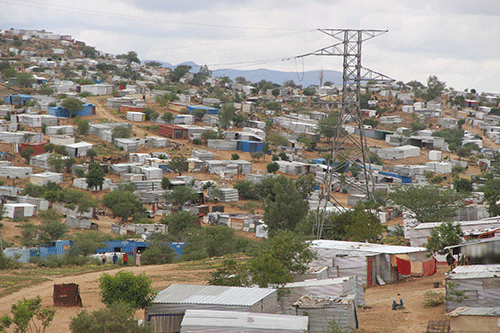Despite government promising to end the use of bucket toilets in Namibia by the end of 2017, households in the Kunene, Hardap and //Kharas regions still use the bucket toilet system – five years past the initial deadline.
This was discovered by the National Council Standing Committee on Transport, Infrastructure and Housing, which visited many regions earlier this year to evaluate the country’s sanitation situation.
The six-member delegation, chaired by Abraham Kaushiweni, visited the Khomas, Hardap,
//Kharas, Omaheke, Otjozondjupa, Zambezi, Kavango East, Ohangwena, Oshikoto, Oshana, Omusati, Kunene and Erongo regions.
“The bucket toilet system is still being practised by some Namibians in some parts of the country, especially in Kunene, Hardap and //Kharas regions,” Kaushiweni said in the report tabled in National Council last week.
Then minister of urban and rural development, Sophia Shaningwa, while addressing a strategic workshop in April 2017 said the use of bucket toilets in Namibia would be a thing of the past by the end of that year.
At the time, according to statistics, there were more than 2 000 households in the urban and peri-urban areas that were still using the bucket toilet system.
Describing the bucket toilet system as unhygienic, Shaningwa said she would ensure the system is removed by end of the year.
At the time, she said the government would target households that are close to reticulation systems because of financial problems.
The construction of proper waterborne toilets and connecting them to the main sewer line will also be part of the work, Shaningwa said.
The urban and rural development ministry, through its public relations office, did not respond to questions sent to the ministry on Monday despite acknowledging receipt thereof.
Meanwhile, the Opuwo Town Council, which has about 26 000 residents, complained about the burgeoning of informal settlements at the town, saying it is causing many of these informal communities to lack proper sanitation.
“Every time the town attempted to formalise one informal settlement, another informal would come up and so on,” the town’s leadership told MPs.
According to them, informal settlements such as Katutura Old and New, VIP, Otjizemba, Otuzemba, Katuuo, Ovitjanga south east surround the town.
Despite the uncontrollable growth of informal settlements, they had encouraged residents to build their own toilets while they wait for the completion of the sewer main line.
The leadership also informed the MPs that both old and new Katutura settlements are not connected to the sewer line where some residents have their own sceptic tanks.
– ktjitemisa@nepc.com.na


